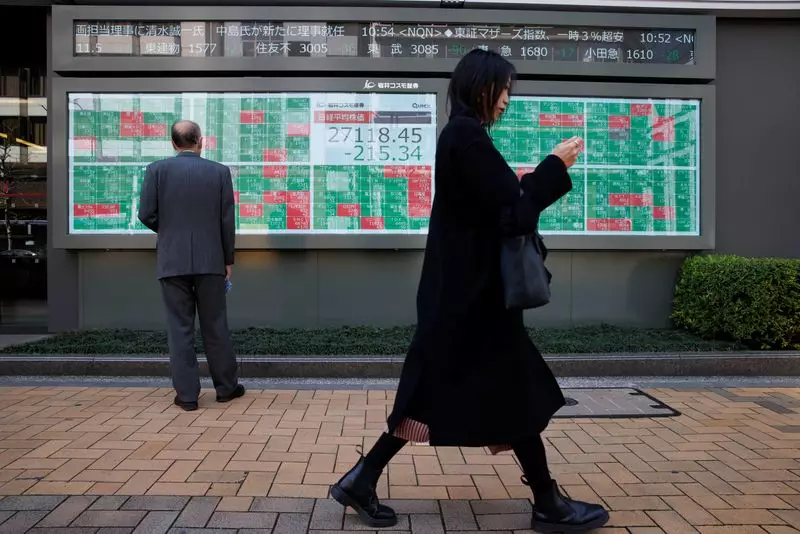The Asian stock market has displayed a roller coaster ride in recent weeks, with fluctuating sentiments and evolving dynamics. The market sentiment seems to be characterized by uncertainty and caution, as traders brace themselves for impending key events and data releases. While some sectors like tech stocks have seen a surge, others like China stocks have experienced a decline. The overall trend appears to be choppy and indecisive, reflecting the prevailing economic uncertainties and geopolitical tensions.
Impact of U.S. Inflation Reading
One of the key factors influencing the Asian stock market’s trajectory is the impending U.S. inflation reading. The market is awaiting this crucial data release with bated breath, as it could potentially have far-reaching implications on trading activities. The hawkish comments from Federal Reserve officials have also contributed to the cautious stance of traders, as they weigh the possibilities of near-term U.S. rate cut expectations. This has resulted in a boost to the dollar, further impacting the overall market dynamics.
The looming presence of the Japanese authorities in the market, particularly with regards to the yen’s exchange rate, is another factor to consider. The yen’s proximity to the 160 per dollar level has put traders on alert, as there is a possibility of intervention by Japanese authorities to stabilize the currency. The recent history of yen’s movements and government interventions underscores the sensitivity and volatility of the market, further complicating trading decisions and strategies.
The statements from Federal Reserve officials regarding interest rate cuts have also added to the market’s uncertainty. While there is an indication of a potential rate cut if economic performance meets expectations, the timing and extent of such actions remain ambiguous. This ambiguity has kept traders on their toes, as they try to anticipate and interpret the central bank’s moves. The expectations of rate cuts along with stable economic data have created a complex environment for traders to navigate.
The market is currently pricing in a certain degree of easing this year, with a September rate cut being seen as a probable outcome. The predictions and expectations for the market are based on a variety of factors, including inflation data, economic performance, and geopolitical developments. Traders are closely monitoring key indicators and events, such as the U.S. personal consumption expenditures price index, to gauge the market sentiment and potential future movements.
Apart from the stock market, the commodities market, particularly oil and gold, is also witnessing fluctuations. Oil prices have remained relatively stable in Asian trade, with Brent crude oil futures exhibiting a flat trend. On the other hand, gold prices have experienced a slight dip but are still up significantly for the year. The interplay between commodity prices and market dynamics adds another layer of complexity to traders’ decision-making process.
The Asian stock market is currently navigating through a period of volatility and uncertainty, driven by a myriad of factors ranging from economic data to government interventions. Traders and investors are treading cautiously, as they try to decipher the evolving market dynamics and make informed decisions. The future trajectory of the market remains uncertain, and only time will reveal the ultimate outcome of these complex and interconnected forces at play.

